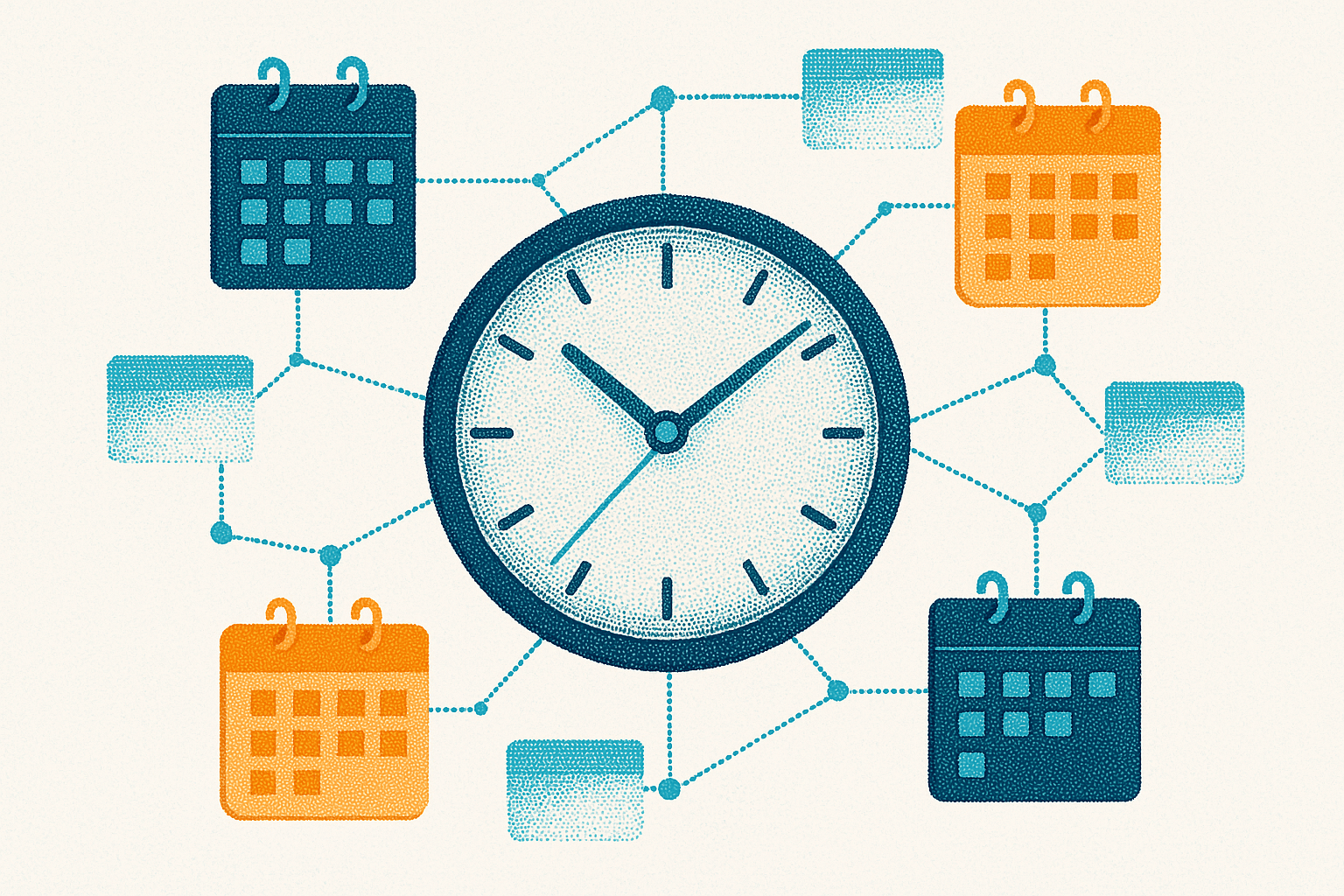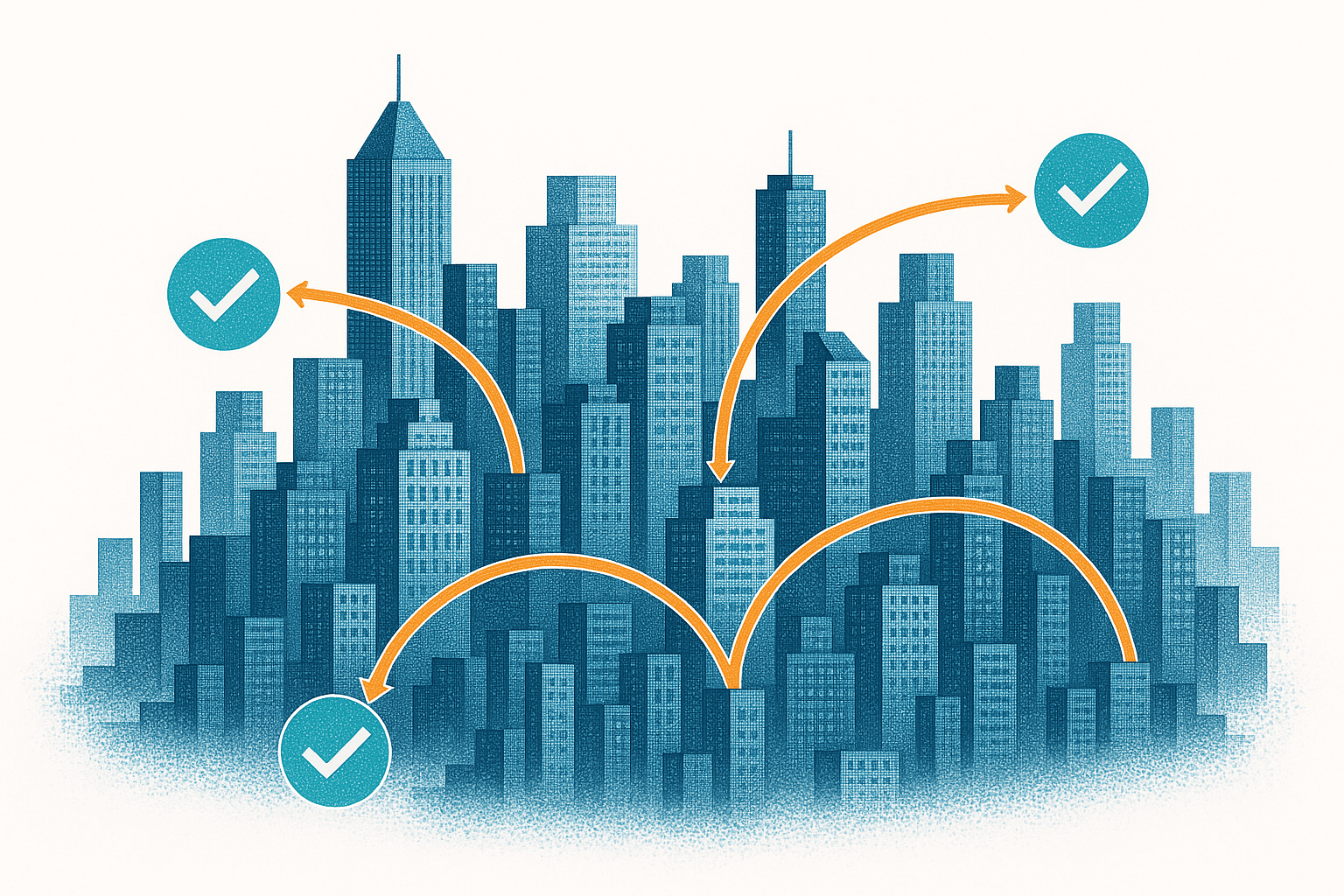Business Travel Itinerary Guide 2025: Templates & Tips
Business travel itineraries break when meetings shift. See a 3-day example and how to handle last-minute changes.

Most travelers still piece together flights, hotels, and meetings across booking sites, spreadsheets, and email threads. This manual process takes hours and creates gaps that turn into missed connections and scrambled logistics the moment something goes wrong.
This guide shows what belongs in a business travel itinerary and explains why complex trips often break down. You'll see an example of a three-day business travel itinerary, built to manage disruptions, and learn how Otto the Agent manages the booking and rebooking automatically.
What Is a Business Travel Itinerary?
A business travel itinerary should map every part of your trip so you spend zero time hunting for details when you should be prepping for the pitch. Business travel leaves little room for error because of tight schedules and company policy compliance. One missed connection can leave you scrambling to save the rest of the week.
Your business travel itinerary should include all the details: flight numbers, departure times, hotel addresses, confirmation codes, and meeting-by-meeting agenda. Ground transport pickups and local emergency contacts belong there, too. Everything you need to know to keep moving and let your company reach you in an emergency.
Over the past decade, digital itinerary tools have replaced carrying around a folder of paper printouts. These platforms push real-time notifications straight to your phone when flights get delayed or schedules shift. You see the delay alert and can message your driver or hotel staff with your new arrival time. Otto goes one step further and coordinates those updates automatically when disruptions happen.
Key Components of a Business Travel Itinerary
A complete business travel itinerary covers four pillars: how you move, where you sleep, when you meet, and what happens when plans change. These four components keep your trip on track when disruptions happen.
Track Every Movement Detail
List every flight number, seat, booking code, and mileage account in one place so you're never hunting through emails when plans shift. Add ride-share pickups, rail times, or car-rental confirmations, plus the buffer you need between segments. Include a backup option like an earlier train or later flight, so a single delay doesn't cascade.
Hotel Details Determine How You Perform
Hotel name, address, Wi-Fi info, loyalty number, and check-in time all belong beside your flight data in your business travel itinerary. Note why you chose the property. Walking distance to the client site, for example, helps you avoid second-guessing yourself at midnight. A room that matches your status perks saves money and stress while you focus on the meeting ahead.
Keep Meeting Details Centralized
List every meeting in your business travel itinerary with street addresses, floor numbers, attendee contacts, and dial-in links. Having all the details in one document means you can pull up the exact address when your driver asks, find the right conference room when you arrive, or dial into the meeting if your flight gets delayed. You stop digging through email threads at the last minute.
Add Backup and Policy Information
Keep passport photos, visa notes, insurance numbers, and emergency lines in the file. Add spend caps, preferred vendors, and a section on local etiquette so you don't breach company rules or cultural norms. Modern travel policies show how these guardrails cut both cost and risk when disruptions hit.
Business Travel Itinerary Example: A Multi-City Trip
This three-day sales trip shows how to build an itinerary that survives real-world chaos. Boston to San Francisco to Seattle and back, with client pitches, product demos, and a budget review waiting at home. Every detail locks in before departure, with buffers that absorb delays without derailing meetings.
A successful trip often comes down to the details. Pre-booked ground transport keeps you moving between cities without scrambling for rides. Forty-five-minute cushions between connections follow the buffer rule that prevents missed meetings when flights run late. Loyalty numbers sit beside each booking, so points post automatically and upgrades clear without phone calls from the airport. When the Tuesday morning flight gets delayed 90 minutes, the auto-rebook protects the afternoon demo, proof that a tight schedule can bend without breaking your entire trip.
How Otto Makes Complex Trips Effortless
Otto works as both your business travel itinerary and your executive assistant. It creates a centralized travel schedule with flights, hotels, meetings, and contacts that stays current across your devices. When disruptions happen, Otto updates the itinerary automatically instead of leaving you to manually fix spreadsheets or PDFs.
Otto manages your itinerary this way because it learns what you prefer and acts on it automatically. After two trips, it knows your preferred airline, your seat preference, and your hotel loyalty program. The next booking starts with those choices pre-filled. It applies your loyalty numbers without asking and filters out options that break company policy.
Its conversational interface allows you to adjust plans, check details, or review your trip without switching apps or digging through emails. Otto reads your calendar, spots a 3 p.m. meeting in Palo Alto, and works backward to suggest flights that land with a one-hour buffer. When a client pushes the meeting, Otto reshuffles the flights and hotel in the background while you focus on prepping for the presentation.
Book Your Next Trip Smarter
A complete business travel itinerary with every flight, hotel, meeting, and backup plan accessible on your phone means you spend your trip closing deals instead of fixing logistics problems. You've seen what that looks like now.
Most road warriors still waste hours on spreadsheets and time on hold with airlines because that's what the tools force them to do. Otto learns your preferences after a couple trips, handles bookings in minutes instead of hours, and fixes disruptions while you sleep.
Try building your next business travel itinerary with these four pillars. Or let Otto handle it and spend that time prepping for the pitch instead.



